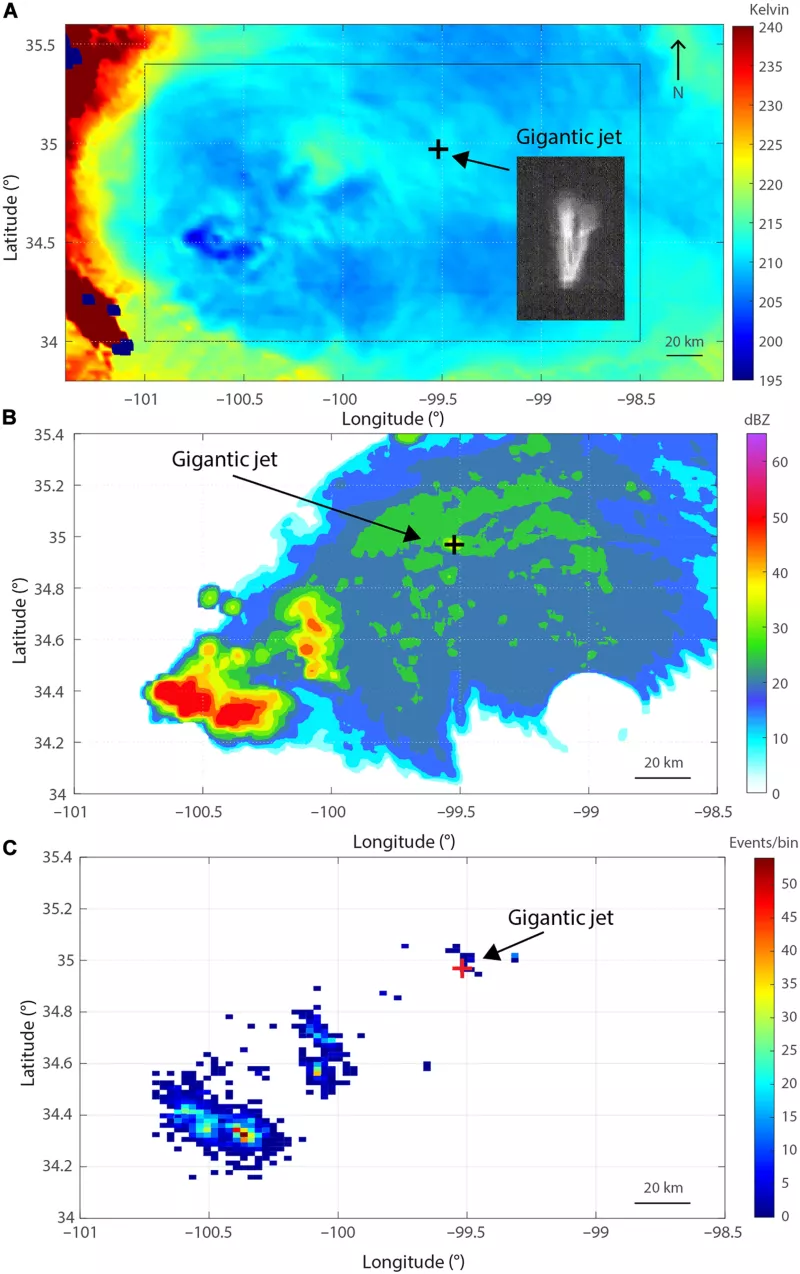Thanks to a citizen, such lightning was recorded above the clouds during a thunderstorm in Oklahoma, USA in 2018.
The “upside down” lightning bolts it is a mysterious phenomenon of nature and unlike normal lightning, it does not fall to Earth but is directed towards space. We know very little about them since they are unpredictable and take place above the clouds. Thanks to a citizen, however, such lightning was recorded above the clouds during a thunderstorm in Oklahoma on USA in 2018 and with the data they managed to collect scientistswere able to study it extensively in three dimensions.
“We were able to map this giant column in three dimensions with very high quality data. We were able to see VHF sources above the clouds, which we had not seen before in such detail. Using satellite and radar data, we were able to learn the location of the largest concentration of the plume above the cloud.”the researchers report.
The fact that the lightning detected from multiple systems, including the Lightning Mapping Array and two geostationary satellites, was a unique event and gives us a lot of information about the phenomenon. It is probably the first time that such a giant column is mapped in three dimensions.
The “upside down” lightning bolt started from the clouds at a height of 8 kilometers and reached ten times the altitude, near the Karman line where the Earth’s atmosphere ends and space begins. It carried 300 coulombs of electrical charge, when a typical lightning bolt carries only 5 coulombs. The temperature of the ionized air along the discharge reached 4,700 degrees Celsius, while the smaller plasma branches only reached 200 degrees.
The electrical connection of the clouds to the ionosphere carried a negative charge of the order of thousands of amperes per second. What we can see in the visible spectrum was limited to an altitude of 20 kilometers, but VHF transmissions reached 45 kilometers.
The VHF and visual signals confirmed what researchers suspected but had not yet proven. How the VHF emissions from lightning are emitted from the edge of the lightning, while the strong electric currents are much further back.
As to why some lightning travels upward instead of downward, it remains a mystery. Researchers suspect that there may be something blocking the lightning from moving toward the ground or other clouds.
“For some reason, there’s a barrier to cloud-to-ground deflation. There is a concentration of negative charge and we believe that the conditions at the top of the storm weaken its upper layer which is normally positively charged. In the absence of a lightning discharge that we normally see, the giant columns may be releasing the concentration of excess negative charge.”
The research was published in Science Advances.
Read the News today and get the latest news. Follow us on Google News and be the first to learn all the news from Skai.gr.
I have over 8 years of experience in the news industry. I have worked for various news websites and have also written for a few news agencies. I mostly cover healthcare news, but I am also interested in other topics such as politics, business, and entertainment. In my free time, I enjoy writing fiction and spending time with my family and friends.











